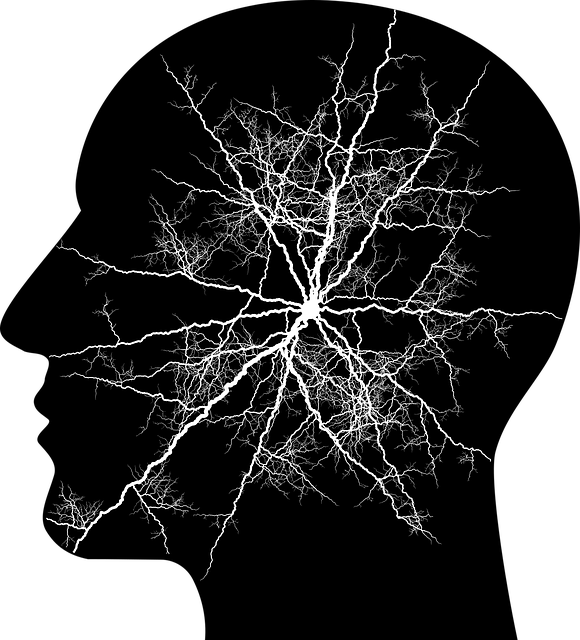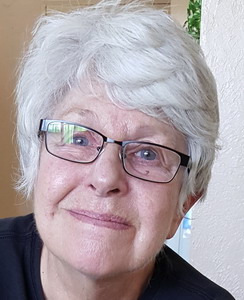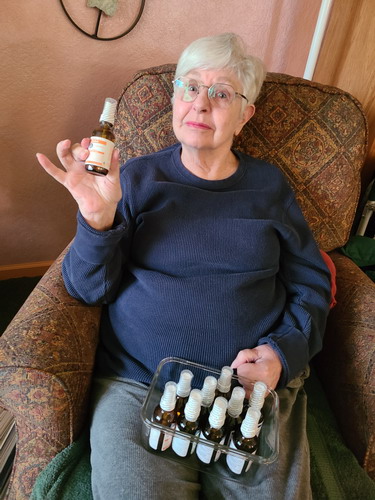|
Black & White Thinking Black-and-white thinking originated in the brains of children. Yes, we all start as black-and-white thinkers. As our
brain grows and matures, we are guided by our caregivers through events and experiences that introduce us to differences. Eventually, we encounter different people, places, and things. If our family unit feels safe and we have created a feeling of belonging, our new encounters will also feel safe and comfortable. When our early years are less than perfect, we engage the world from a place of fear, not trust and ease.
General Limitations of Black-and-White Thinking
Personal Examples of Black-and-White Thinking
I was ready to let go of the pain, but could I engage the guidance of a higher power? It’s not an easy transition!
Thanks, Ellen Ellen Ellen is expanding her life skill coaching practice to include homeopathic sprays that support resolution of emotional blockages stuck in the body. These sprays were developed for Neuro-emotional technique (NET) practitioners many years ago, a program Ellen participated in 25 years ago. Bits of NET are incorporated in Heartflow, the system Ellen uses to help folks grow out of the stuck patterns in their lives. |
 Tai Chi better than aerobics for BPAfter a whole year of 60 min. 4 times a week of either Tai Chi or aerobic exercise Researchers found that blood pressure both sitting and while walking reduced more significantly in the Tai Chi group than the aerobics group. The hypothesis is that the Tai Chi reduced the excitement nerves in the body better than aerobic exercise. Tai Chi better than aerobics for BPAfter a whole year of 60 min. 4 times a week of either Tai Chi or aerobic exercise Researchers found that blood pressure both sitting and while walking reduced more significantly in the Tai Chi group than the aerobics group. The hypothesis is that the Tai Chi reduced the excitement nerves in the body better than aerobic exercise.
More “If one sticks too rigidly to one’s principles, one would hardly see anybody.“ ~ Agatha Christie __________________________________
 How effective is Semaglutide afterwardsSemaglutide aka Wegovy weight loss drug is hot right now, and is effective. But the question is does the weight stay off? Now that a couple years has gone by we find that once quitting the weekly injections, 2/3rds of the weight comes back on within a year on average. To keep weight off exercise and diet changes have to become the new lifestyle. How effective is Semaglutide afterwardsSemaglutide aka Wegovy weight loss drug is hot right now, and is effective. But the question is does the weight stay off? Now that a couple years has gone by we find that once quitting the weekly injections, 2/3rds of the weight comes back on within a year on average. To keep weight off exercise and diet changes have to become the new lifestyle.
More “The popular idea that a child forgets easily is not an accurate one. Many people go right through life in the grip of an idea which has been impressed on them in very tender years.” ~ Agatha Christie  Health cost of junk foodA meta analysis of all studies on diet over the last three years not funded by junk food companies looked at around 10 million people to see what adverse health outcomes resulted. Results – around a 50% increase in cardiovascular related death, similar for increased anxiety/mental health issues, 21% increase in death from any cause, and a 12% increase in diabetes. Increases in 32 different adverse health outcomes were discovered. Health cost of junk foodA meta analysis of all studies on diet over the last three years not funded by junk food companies looked at around 10 million people to see what adverse health outcomes resulted. Results – around a 50% increase in cardiovascular related death, similar for increased anxiety/mental health issues, 21% increase in death from any cause, and a 12% increase in diabetes. Increases in 32 different adverse health outcomes were discovered.
_________________________________________ “Most successes are unhappy. That’s why they are successes – they have to reassure themselves about themselves by achieving something that the world will notice.” |

 This week we have a guest author, my partner Ellen. Our weeks are spent discussing growth and learning stuff because that is our main shared interest. Ellen decided to write about some of our recent insights into how we process life.
This week we have a guest author, my partner Ellen. Our weeks are spent discussing growth and learning stuff because that is our main shared interest. Ellen decided to write about some of our recent insights into how we process life.
 If we do not mature out of fear by some miracle or change of circumstance, we become trapped. To move out of fear, we would need to feel and be guided by feelings. Moving into feeling takes us to our fear, which is precisely what we do not want. Our focus of attention becomes our thoughts, which are easier to manage and control. Our thoughts and beliefs direct our attention away from feeling and help us hide from any feedback that would allow us to see a broader view.
If we do not mature out of fear by some miracle or change of circumstance, we become trapped. To move out of fear, we would need to feel and be guided by feelings. Moving into feeling takes us to our fear, which is precisely what we do not want. Our focus of attention becomes our thoughts, which are easier to manage and control. Our thoughts and beliefs direct our attention away from feeling and help us hide from any feedback that would allow us to see a broader view. My father lived in fear because a rage-full parent dominated his childhood. He could not tolerate anything being different or not his way. I took his demands of sameness personally. I believed there was nothing I could do to change his behavior, and I chose to resist him, his demands, and any connection to him. My mother adapted to my father’s fear by suppressing herself. Both parents used black-and-white thinking to reduce the complexity of their lives. I did not challenge their perspective; I adopted their black-and-white concept of life, adjusting their way to become my way.
My father lived in fear because a rage-full parent dominated his childhood. He could not tolerate anything being different or not his way. I took his demands of sameness personally. I believed there was nothing I could do to change his behavior, and I chose to resist him, his demands, and any connection to him. My mother adapted to my father’s fear by suppressing herself. Both parents used black-and-white thinking to reduce the complexity of their lives. I did not challenge their perspective; I adopted their black-and-white concept of life, adjusting their way to become my way. I needed functional modeling to have the skills to create friendships. I lived in fear because most of the world was not my way, and I had no skills to engage with difference. My fear drove me to demand my way, as my father did. Yes, my way is the same as black-and-white thinking. My way and black-and-white thinking are attempts to move something into my comfort zone or area of familiarity. I was trying to create ease in a world of difference; all I knew was anger and demand of my way. Connection and friendship were beyond my grasp, and I did not know how to change the situation.
I needed functional modeling to have the skills to create friendships. I lived in fear because most of the world was not my way, and I had no skills to engage with difference. My fear drove me to demand my way, as my father did. Yes, my way is the same as black-and-white thinking. My way and black-and-white thinking are attempts to move something into my comfort zone or area of familiarity. I was trying to create ease in a world of difference; all I knew was anger and demand of my way. Connection and friendship were beyond my grasp, and I did not know how to change the situation. Eventually, I found alcohol to ease the pain of isolation. I used the alcohol to suppress and hide my demand for my way. I could not change my driving fear and need for my way, but I learned to hide it. I depended on my black-and-white thinking to move forward, not realizing I was moving mindlessly. After many years of living through failed relationships, I was introduced to a twelve-step program. I was presented with the understanding that my way was not the best. Somebody explained that My way and black-and-white thinking caused my suffering. They explained that a power greater than myself would guide me to ease if I let go of my way.
Eventually, I found alcohol to ease the pain of isolation. I used the alcohol to suppress and hide my demand for my way. I could not change my driving fear and need for my way, but I learned to hide it. I depended on my black-and-white thinking to move forward, not realizing I was moving mindlessly. After many years of living through failed relationships, I was introduced to a twelve-step program. I was presented with the understanding that my way was not the best. Somebody explained that My way and black-and-white thinking caused my suffering. They explained that a power greater than myself would guide me to ease if I let go of my way. My desire and drive for ease inspired me to risk the discomfort and fear of change. I walked forward with the love and support of my new twelve-step family, giving me the courage to do whatever was required to reach ease.
My desire and drive for ease inspired me to risk the discomfort and fear of change. I walked forward with the love and support of my new twelve-step family, giving me the courage to do whatever was required to reach ease.